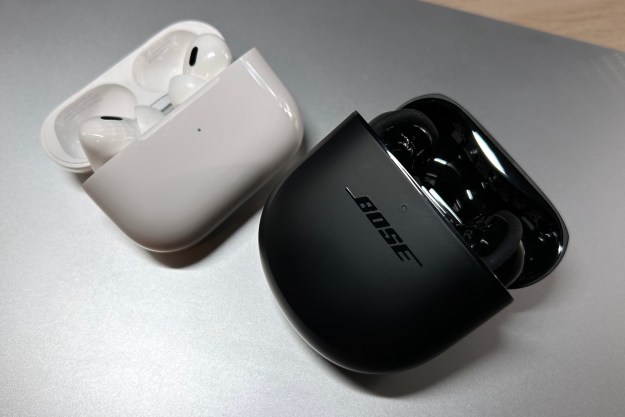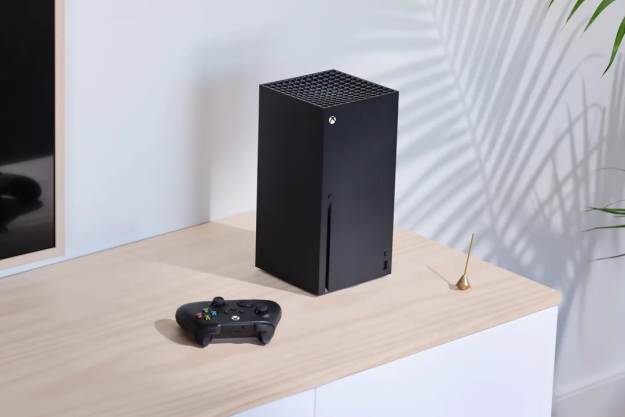Audio can be a tricky subject, especially when you’re considering a new set of earbuds. Whether you’re a constant commuter or occasional podcast listener, a great set of wireless earbuds should be comfortable, snug, and provide excellent sound quality regardless of the environment you’re sitting or standing in.
If you’ve been perusing the shelves of digital and brick-and-mortar establishments for a new set of buds, two brands you’ve probably come across are Google and Apple. While both companies may not be the best of the best when it comes to wearable audio gear, the many generations of Apple’s AirPods and Google’s Pixel Buds mean that people keep buying them — and for many great reasons.
Today, we’ll be comparing Google’s Pixel Buds A-Series with Apple’s AirPods 3 to weigh in on the differences and similarities between both brands. Here’s hoping this makes your next earbud purchase an easier one.
Design and comfort
Compared to Google’s Pixel Buds 2, the Pixel Buds A-Series brings a lighter design to the table, making for an easier and more comfortable fit for longer listening sessions and phone calls. Released in June 2021, Google claims to have re-engineered the non-removable stabilizer arcs, making them softer and less bulky. Aside from these small changes, the A-Series looks and feels almost exactly like 2019’s now-discontinued Pixel Buds 2.
The A-Series buds and charging case are sleek, lightweight, and totally ergonomic. When it comes time to charge your buds, the case is easy to open and close, and the buds snap into the case. While the $179 Pixel Buds 2 were capable of wireless charging, the Pixel Buds A-Series loses this capability — although the case does include a magnet for attaching it to the sides of filing cabinets and similar surfaces.
In-ear, the A-Series buds have a relatively flush look and, most importantly, fit snugly — an improvement over the Pixel Buds 2. Thanks to a spatial vent for alleviating inner-ear pressure, the buds feel cozier, even when worn for long periods of time, and the semi-open design allows some outside noise in. This is especially convenient for commuters contending with city traffic, emergency vehicles, and general passersby — although we wish there was a true “transparency” mode.
IPX4-rated, the Pixel Buds A-Series can stand up to sweat and water, but not direct submergence. As far as color options, Google currently offers the buds in Clearly White and Dark Olive.
Read our full review of the Google Pixel Buds A-Series

In terms of the overall design, Apple’s AirPods 3 are perfectly nestled between the original AirPods and AirPods Pro when it comes to things like size, shape, and fit. Many original gen-one AirPods owners enjoyed the way the buds felt in their ears but also felt that they moved around a little too much. This, along with an official weather rating, deterred a handful of users from using the AirPods for working out.
These frustrations were mostly corrected with the redesign of the AirPods 3. Apple’s latest buds are slightly more curved and bulbous and feature shorter stems, making for a tighter in-ear fit. While the AirPods Pro offers the most secure fit, thanks to the inclusion of multiple eartips, the AirPods 3 are the perfect middle ground between the AirPods 2 and Apple’s flagship buds — although you may need to adjust them from time to time.
Read our full review of the AirPods 3
We also love that the AirPods 3 charging case offers Qi and MagSafe wireless charging options — a feature completely missing from the Pixel Buds A-Series. Like the A-Series, though, the AirPods 3 are officially designated as IPX4 earbuds, making them safe (and more secure) to exercise with. Just don’t dunk them in water.
While comfort and fit are pretty even between the Pixel Buds A-Series and AirPods 3, we’re giving this category to the AirPods 3, specifically for its wireless charging capabilities. Do be aware that there’s only one color option, though — white.
Winner: Apple AirPods 3
Controls and features
While the Pixel Buds A-Series preserve a number of the Pixel Buds 2 features, there are a few things notably cut from the lesser-priced buds. As mentioned, there are no wireless charging options this time around. Gone too is the ability to adjust volume with touch commands, a relatively common feature across many earbud brands. While you’ll still be able to access track controls with simple taps, you’ll now have to raise/lower the volume using the device your A-Series are connected to, or through voice commands with Google Assistant.
One disappointment with the Pixel Buds 2 was that you couldn’t use Google Assistant with non-Android devices — even if you had the Google Home app installed. Unfortunately, this carried over to the A-Series.
For any advanced A-Series features, users will want to download the Pixel Buds companion app (not available for iOS devices). The app allows you to check the battery level of the buds and charging case, and adjust features like Adaptive Sound (more on that below), in-ear detection, notifications, and “find device” functions. While we’re glad that these expanded settings exist, it would be nice to see these adjustments ported over to non-Android devices.
With the AirPods 3, Apple stepped away from touch controls in favor of force sensors that are placed on the stems of the buds. Using single, multi-press, and press-and-hold commands, users can adjust track controls, answer phone calls, activate Siri, and more. You can also wake Apple’s digital assistant with a “Hey, Siri” voice command. Based on our testing experience, Siri did well responding to both short- and long-form commands, carrying out executables quickly and without hiccups.
Similar to Google’s Android loyalty, you won’t be able to use Siri commands with non-iOS devices. You also won’t be able to directly adjust volume with your AirPods 3 — although volume controls are easier to access than the Pixel Buds (you can raise/lower volume with Siri, on the Lock Screen, or in Control Center).
AirPods 3 owners can also customize what the force sensors do by going into the Bluetooth settings of whatever iOS device the AirPods are paired to.
For those looking for an audio experience unlike any other, the AirPods 3 support Apple’s spatial audio feature, an impressive head-mapping function that tracks cranium movements. Spatial audio, combined with Dolby Atmos tracks, adds lifelike depth to your listening experience, making it sound like you’re sitting in the studio with your favorite brand.
One similarity between both Google and Apple buds is in the inclusion of a skin-detection sensor that automatically pauses music when you take the buds out of your ears, only resuming the track when you place the buds back in.
Based on customizable controls, wireless charging, and Spatial Audio support, we’re awarding another point to the AirPods 3.
Winner: Apple AirPods 3
Battery life
The Pixel Buds A-Series deliver decent battery life for what you’ll pay. On a full charge, you can expect your pair to last for up to five hours, with an additional 24 hours available with a fully-juiced charging case. Dropping the buds into the case and charging for 15 minutes will get you an extra three hours of listening time.
The AirPods 3 are just a little stronger than the Pixel Buds A-Series. A full charge will last up to six hours, and the charging case will get you up to 30 extra hours of playtime. Apple’s fast-charge feature will get you an extra hour of listening for every five minutes you charge — matching the quick-charge capabilities of the A-Series.
Winner: Apple AirPods 3
Sound and call quality
For only $99, the Pixel Buds A-Series sound pretty great when listening to tunes and podcasts. Carrying over the 12mm drivers from the Pixel Buds 2, the A-Series delivers a crisp and clear listening experience with emphasis on the higher frequencies of the sound spectrum. This makes them ideal for talk radio and vocal-driven pop music.
Unfortunately, the A-Series doesn’t do so well with midrange and bass. In fact, even with bass boost enabled, many listeners will still be looking for bigger low-end performance. We think that due to the vented design of the A-Series, the buds have a tough time filtering out unwanted noise — even with the adaptive audio feature enabled.
In terms of call quality, there’s much to be desired with the A-Series buds. Environmental noise, even at lower levels, can make it difficult for callers to hear what you’re saying.
While Google has fixed a number of poor connection bugs reported with the Pixel Buds 2, some of these glitches are still prevalent with the A-Series. Many users have reported dropped calls and dropouts when not in close proximity to the host device.

On Apple’s side of the trenches, the AirPods 3 offer plenty of clarity across higher frequencies, along with warm and powerful bass. While the semi-open design prevents them from completely sealing in sound, when listening in a quiet environment, the buds sound spectacular. Plus, with added spatial audio support, listeners are in for some cutting-edge sound staging that reacts to head movement on the fly.
In terms of call quality, the AirPods 3 are sufficient, operating well in moderately loud environments. As mentioned, the semi-open design functions as a built-in transparency mode that is always enabled, so if you’re hanging out in a noisy place, both you and the person you’re on a call with are going to inevitably contend with the environment.
Thanks to spatial audio and a lack of connection bugs (overall), we’re giving another point to the AirPods 3.
Winner: Apple AirPods 3
Noise cancellation and transparency
Neither the Pixel Buds A-Series nor the AirPods 3 feature active noise cancellation (ANC). While both sets of buds maintain some level of passive noise cancellation through add-ons like the adaptive sound feature built into the A-Series, the semi-open design of both buds presents a challenge when listening and talking in louder environments.
If you’re looking for a set of Apple buds designed to cut down on environmental sound, we recommend looking into the AirPods Pro. Unfortunately, Google devotees won’t even find ANC with the higher-priced Google Pixel Buds 2.
For overall noise cancellation, we’re calling this one a tie.
Winner: Tie
Price and warranty
The Google Pixel Buds A-Series sell for $99 and include a one-year limited warranty. The Apple AirPods 3 cost $179 and also include a one-year limited warranty — although you can add extended coverage for your AirPods by purchasing AppleCare+.
Winner: Google Pixel Buds A-Series
Our verdict
The Google Pixel Buds A-Series brings a number of the best features of the Pixel Buds 2 to the table while removing others to provide a decent audio solution for around $100. That being said, when it comes to overall sound features, reliability, and charging functions/battery life, we would more than willingly spend the extra $70 for the Apple AirPods 3.
Editors' Recommendations
- Best AirPods Pro deals: Get Apple’s flagship earbuds for $122
- Best AirPods deals: Save on AirPods and AirPods Pro
- AirPods 4: Everything we know about Apple’s next wireless earbuds
- How to replace lost or broken AirPods, AirPods Pro, or cases
- Apple’s AirPods Pro earbuds are back at their cheapest-ever price




